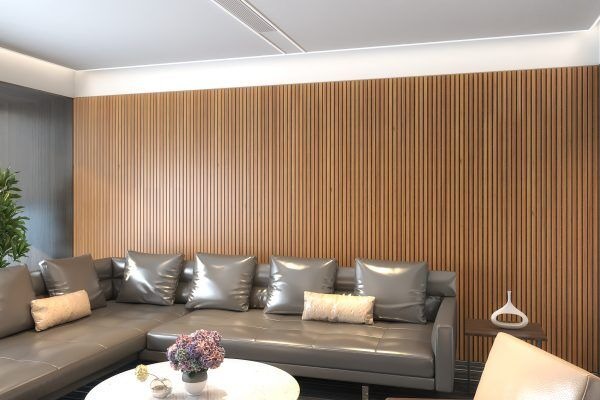Hanging acoustic panels is a practical way to enhance the sound quality in any room, whether it’s a home theater, recording studio, or just a living space craving better acoustics. This article will guide you through the process, offering essential tips to ensure a sound decision for your space.
Understanding Acoustic Panels

Before diving into installation, it’s important to understand what acoustic panels are and how they work. Acoustic panels are designed to absorb sound waves, reducing echo and reverberation in a room.
They come in various materials, sizes, and thicknesses, each suited to specific sound control needs.
Panel Thickness
The thickness of them plays a crucial role in their effectiveness. Thinner ones, typically around 1-2 inches, are effective for absorbing high-frequency sounds but may struggle with lower frequencies.
Thicker panels, ranging from 2-4 inches, are more adept at absorbing a broader range of sound frequencies, including lower ones. When choosing the thickness, consider the specific sound issues in your room.
For instance, thicker ones are ideal for spaces with prominent bass frequencies or for rooms requiring significant sound dampening.
Selecting the Right Panels
Choosing the right acoustic panels involves considering the size of your room, the type of activities it will host, and aesthetic preferences. They come in fabric-wrapped fiberglass, foam, and wood, among others.
Each material has its unique sound absorption characteristics. For instance, fiberglass panels are excellent for high-frequency sound absorption.
Assessing Your Space

Assessing your room’s acoustics is a crucial step. Identifying areas where sound bounces the most, such as bare walls or hard surfaces, helps in strategically placing the panels.
Using a clap test, where you clap in different areas of the room and listen for echo, can be a simple yet effective method.
Planning Your Layout
Once you’ve assessed your room, plan your panel layout. The goal is to balance sound absorption evenly across the room.
Avoid clustering all panels in one area. Instead, distribute them throughout the space to achieve the best acoustic effect.
Tools and Materials
Gathering the right tools and materials beforehand makes the installation process smoother. You’ll typically need a measuring tape, pencil, level, drill, screws or adhesive strips, and, of course, your acoustic panels.
Installation Process
The installation process varies depending on the type of panels and the nature of your walls. For most installations, the process involves measuring and marking the wall, ensuring the panels are level, and then attaching them either with screws or adhesive strips. For heavier ones, using a drill and screws is recommended for secure mounting.
Safety Precautions
When installing acoustic panels, safety is paramount. First, ensure the area is clear of obstacles to avoid tripping or falling. Use a sturdy ladder or step stool for higher installations.
Wear protective gear like gloves and safety glasses, especially when drilling. Be mindful of electrical wiring behind walls to avoid shock hazards.
If using adhesive, ensure proper ventilation to avoid inhaling fumes. Finally, if they are heavy, enlist help to prevent strain or injury. Following these precautions ensures a safe and successful installation process.
Professional Installation
For those unfamiliar with DIY projects, hiring a professional for panel installation is a viable option. Professionals can ensure accurate and safe installation, especially for complex layouts or large spaces. They can also provide advice on the best types of panels for your specific needs.
While this adds to the overall cost, the expertise and labor of a professional can save time and guarantee a more effective acoustic solution. When choosing a professional, look for experience in acoustic panel installation and check for reviews or references.
Cost Considerations

The cost varies widely, depending on material, size, and quality. Foam panels are usually the most affordable, but may not offer the best sound absorption for more demanding environments.
Fiberglass and specialized acoustic materials offer better performance but come at a higher cost.
Factor in the number of panels needed and any installation costs if hiring a professional. Remember, while budget is important, investing in quality panels can lead to more satisfactory and long-lasting acoustic improvements.
Ensuring Correct Placement
Correct placement of acoustic panels is crucial for their effectiveness. The panels should be placed at ear level in areas where sound reflection is most noticeable. In a home theater, for instance, placing them at the first reflection points from your speakers can significantly improve sound clarity.
Balancing Aesthetics and Functionality
While the primary purpose of acoustic panels is to improve sound quality, their appearance is also important. Many panels come in various colors and designs, allowing them to double as decorative elements.
Balancing aesthetic appeal with functional placement is key to maintaining the room’s overall look while achieving acoustic improvements.
Avoiding Common Mistakes
Common mistakes in installing acoustic panels include uneven spacing, incorrect positioning, and not using enough panels to effectively manage sound in the room. It’s essential to follow the planned layout accurately and adjust as needed based on the room’s acoustics.
Maintaining the Panels
Maintaining acoustic panels is relatively straightforward. Regular dusting and avoiding direct sunlight can prolong their life and appearance. If the panels are in a high-traffic area, choosing durable materials that can withstand occasional bumps is advisable.
Advanced Tips for Optimal Results
For those seeking optimal sound quality, considering advanced installation tips like layering panels or incorporating diffusers can be beneficial. Diffusers help scatter sound waves, reducing focal points of sound concentration.
Evaluating the Acoustic Improvement
After installation, evaluating the acoustic improvement in your space is important. This can be done through simple listening tests or more advanced measurements using sound level meters. Adjustments can be made if necessary to further fine-tune the room’s acoustics.
Conclusion
Hanging acoustic panels is a sound decision that can significantly enhance the audio experience in any space. By carefully selecting, planning, and installing the right panels, you can achieve a balance of aesthetic appeal and acoustic perfection.
Remember, good acoustics not only improve sound quality but also contribute to the overall comfort and functionality of a room.







